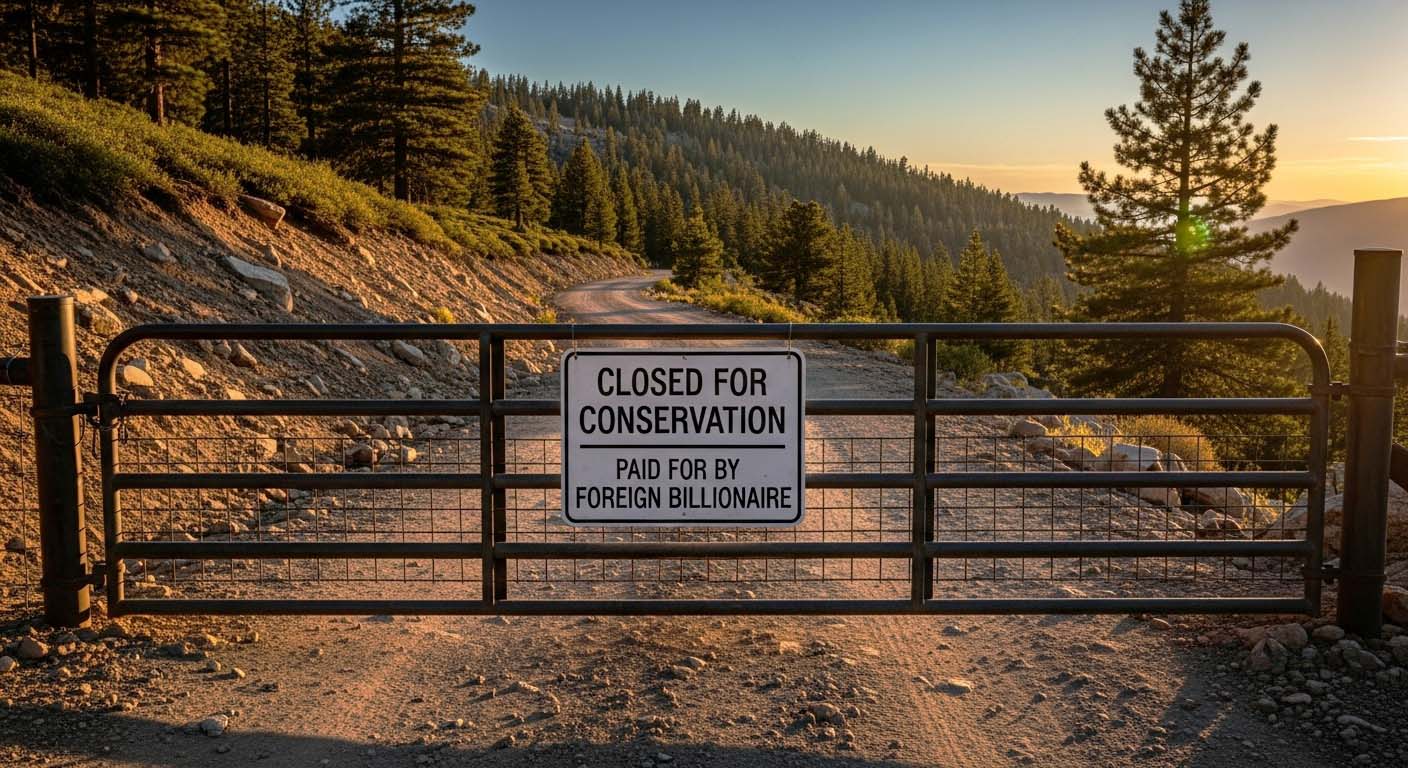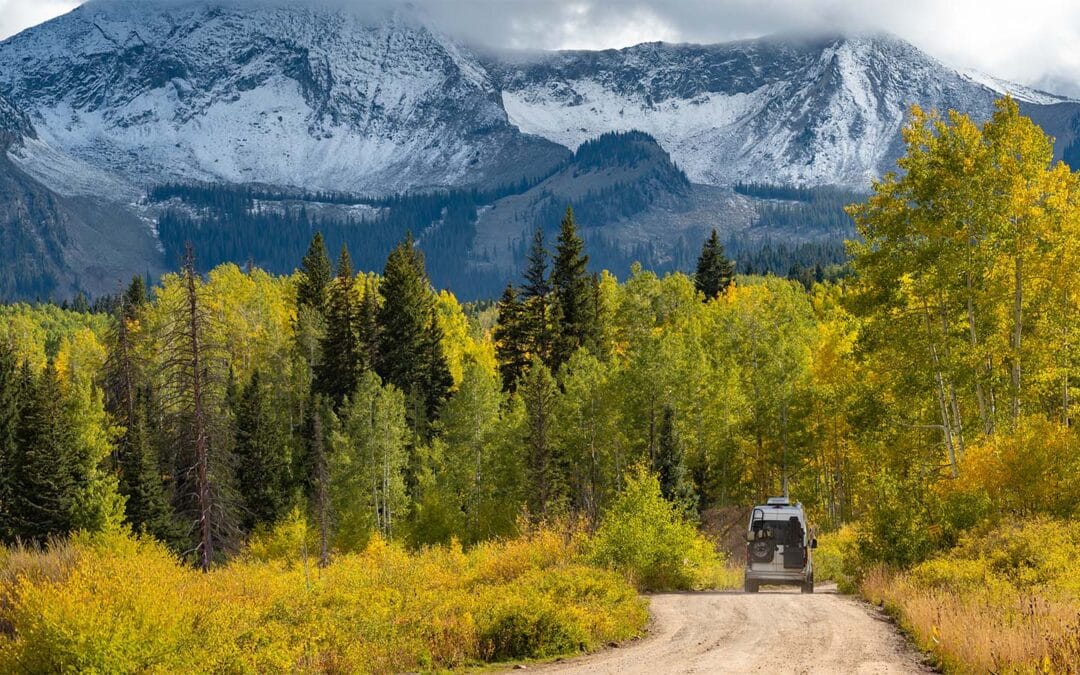In recent weeks, we learned that a Chinese tech billionaire Jack Ma bought 28,000 acres of what has been described as “wilderness land.” He had to set up a shell company to buy the property, and it sounds like he will be managing it with heavy restrictions. With the “Public Lands Rule,” the BLM has created a mechanism to make it possible for billionaires and large corporations to control all 245 million acres of BLM land through the sale of private conservation leases.
The Bureau of Land Management is proposing to rescind this rule, which was finalized during the final months of the Biden Administration. Shockingly, many organizations that claim to oppose privatization of public lands are unifying to fight for this bogus rule to stay on the books. Because this rule was completed at the end of the Biden Administration and was subject to numerous serious legal challenges, it has not been implemented in any way. The legal basis for this rule was weak even before the Supreme Court reversed the Chevron Deference legal precedent. After Chevron Deference was overturned, the legal basis for this rule is non-existent. We encourage everyone to learn more about the threat this rule created for public land recreation and join us in supporting the elimination of this rule.
In this article, I’ll walk you through:
- What exactly this “Public Lands Rule” claims to do
- What it really would do (and create)
- The legal and practical objections
- What it would mean for recreation, access, and conservation
- What we can do to stop it
Conservation Already Enjoys Privileged Status in the Law in and in Management
The most common talking point we see from groups that support this rule sounds something like this:
“This rule puts conservation on equal footing with logging, energy development, recreation, grazing…”
The Bureau of Land Management is required to manage our public lands for multiple use. The BLM receives strong guidance for managing each of the major uses of public land through the form of statutes passed by Congress. Some of these laws have been on the books for over hundred years, and some of them are new. For example, mineral exploration and leasing is governed by laws like the Mining Act of 1872. Grazing is government by the Taylor Grazing Act and other statutes. Recreation is influenced by laws like the recently passed Explore Act. The BLM is required to prioritize conservation and environmental protection in every decision it makes by the following laws:
- National Environmental Policy Act
- Clean Air Act
- Clean Water Act
- Antiquities Act
- Endangered Species Act
- Migratory Bird Treaty Act
- Great American Outdoors Act
- Wilderness Act
- Wild and Scenic Rivers Act
- Wild and Free-Roaming Horses and Burros Act
- Various Omnibus land packages passed over the years
With all of these strong legal protections that then form the basis of hundreds of lawsuits filed by anti-access groups, it is an absolute farce to claim that conservation doesn’t have equal footing as other uses.
Yes, the rule claims to give conservation equal weight. But what it actually does is invent a new mechanism — one the BLM wasn’t authorized to create by any of these laws. That mechanism is the “conservation lease.”
The Conservation Lease: A Rule Made Out of Thin Air
Here’s a key legal point: there is no federal statute that gives the BLM authority to issue “conservation leases” over public lands. It’s not in the Federal Land Policy Management Act, it’s not in the Wilderness Act, it’s not anywhere in the Clean Air or Clean Water statutes.
The BLM conjured this out of thin air via administrative rulemaking. They declared that they would allow ten-year conservation leases. These leases would function very much like a conservation easement, where the BLM and the leaseholder would negotiate which activities to restrict on public lands to achieve the desired outcome of the lease. By doing so, they opened the door — in theory — to wealthy foreign nationals and mega-corporations to acquire management control of leased lands.
This is a massive policy change and a forfeiture of public control over public land. That’s why this kind of change of control ought to be done through Congress, not via an agency rule.
But the BLM went ahead anyway. And if this rule isn’t rescinded, the consequences could be massive.
How This Could Work (And Has Already Begun)
When you look at the example of Jack Ma, you see how this plays out. In this case a Chinese billionaire used shell companies to buy wilderness acreage in New York. That’s exactly the kind of maneuver that would be possible with conservation leases: an entity (foreign or domestic) could gain effective control without obvious traces.
Likewise, look at Apple. They made a deal with The Conservation Fund to protect a working redwood forest in California. But that “protection” is mixed with logging and carbon credits — corporate gain dressed in green. That sort of approach is already happening on private land, and if we don’t stop the rule, it becomes possible on all 245 million acres of public BLM land.
So what the BLM’s rule really does is open the door for the richest players, aided by regulatory mechanisms, to leverage conservation language to gain control of public lands and secure financial benefit.
Recreation & Access: What “Protection” Actually Means
Supporters will tell you: “This rule protects recreation.” But that’s misleading. Because the rule explicitly protects only casual use recreation. And “casual use” has been legally defined (through litigation) to mean non-motorized recreation.
In a 2007 case between BlueRibbon Coalition and the Center for Biological Diversity, the court concluded: “casual use” = non-motorized. That means under the rule, if a conservation lease is implemented strictly, motorized access could be blocked on large swathes of public lands. The rule would certainly be used to create de facto wilderness on our multiple use lands.
For folks who ride, hunt, explore off road — this is an existential threat. The rules could let conservation leaseholders shut down motorized access altogether.
The Rule Is Brand New (And Untested)
Importantly, this rule was signed in 2024, and as far as we’re aware, no single conservation lease has been issued under it.
Supporters of the rule will claim it has already been used for wildlife habitat or water quality. If this is true, show us the lease. Show us the project. You can’t because none exist. The rule hasn’t actually done anything, yet.
It also claims to derive authority from the Federal Land Policy Management Act (FLPMA), passed in 1976. The claim is that the statute always included hidden authority to issue such leases. Think about that: for 50 years, the BLM (and previous administrations) never used this power and now suddenly it emerges like some forgotten tool in the drawer.
That makes no sense. If it truly were there all along, why wasn’t i used and how could it vanish from policy conversation for decades only to appear now?
A Revenue Scheme Disguised as Conservation
One more worrying mechanism: the rule includes a mitigation program. Under this program, if other public land users (say, a family camping trip or an off-road event) cause environmental impacts, they could be forced to pay into a fund. That fund would then pay the conservation leaseholders.
In other words: public land users pay, and rich leaseholders collect.
That turns public lands into revenue streams directed toward private interests (or foreign interests). That’s not how law should work. The authority to tax, raise money, reassign control lies with Congress, not a federal agency.
What This Means for Us
- Access: If conservation leases control large swathes of land, motorized recreation, off-roading, even trail access could be curtailed.
- Control: Land that was once public could come under effective control of private entities, foreign or domestic.
- Conservation as Trojan Horse: Conservation language could mask private profit, mitigation credits, corporate interests.
- Rule vs. Statute: The most dangerous precedent is letting agencies create sweeping powers by rule instead of by the will of Congress.
We all want healthy landscapes, clean water, wildlife habitat — we’re not arguing against conservation. But selling our lands through the form of conservation leases to deepest pockets in the world is not conservation, that’s privatization in disguise.
What We Can Do
- Rescind the Rule — Force a repeal or rollback.
- Legislative Oversight — Push Congress to explicitly legislate what authorities the BLM has (or doesn’t).
- Public Comment & Pressure — Agencies need to hear from constituents that this is unacceptable.
- Watch for Lease Issuances — Demand transparency: when a lease is issued, we need to see the terms, the entity, the impact.
- Legal Challenge — A rule with no statutory basis is ripe for constitutional and administrative litigation.
Final Thoughts
The BLM’s “Public Lands Rule” is being sold as a progressive, balanced solution: conservation and development in tandem, safeguarding lands. But at its core is a dangerous power grab by an executive agency — a rewrite of public land governance without public consent.
If we don’t step in now, we may wake up to find that the lands we thought were ours — where we hiked, hunted, rode, explored — have been quietly parceled out to hidden interests.
We need to treat this not just as a policy debate, but as a frontier fight: who owns America’s public lands, and to what ends?
Urge the BLM and your representatives to rescind The Public Lands Rule with our action alert here.




